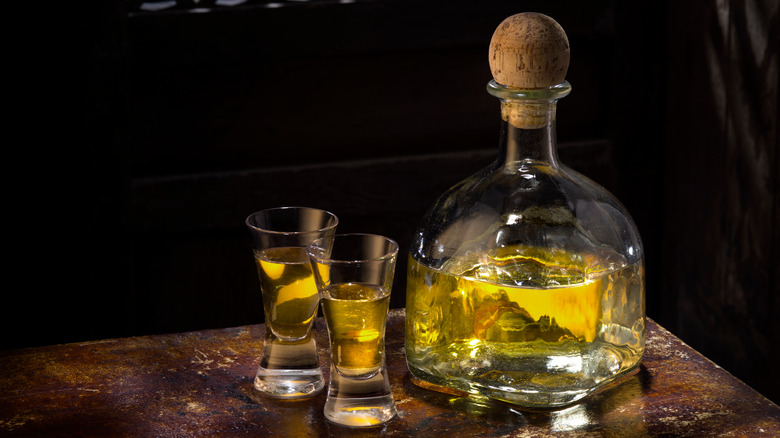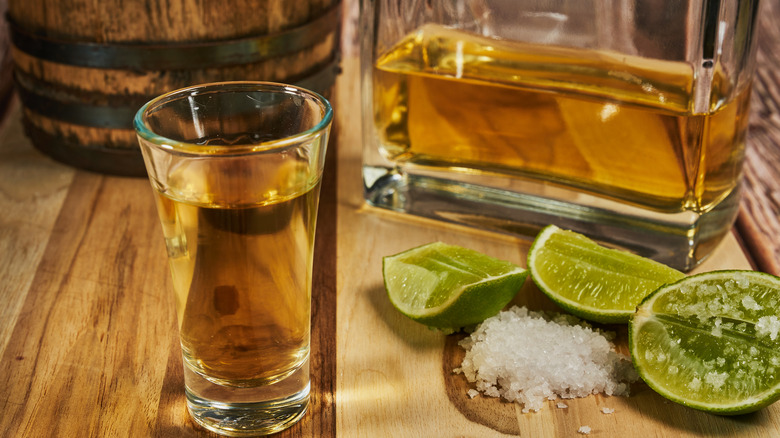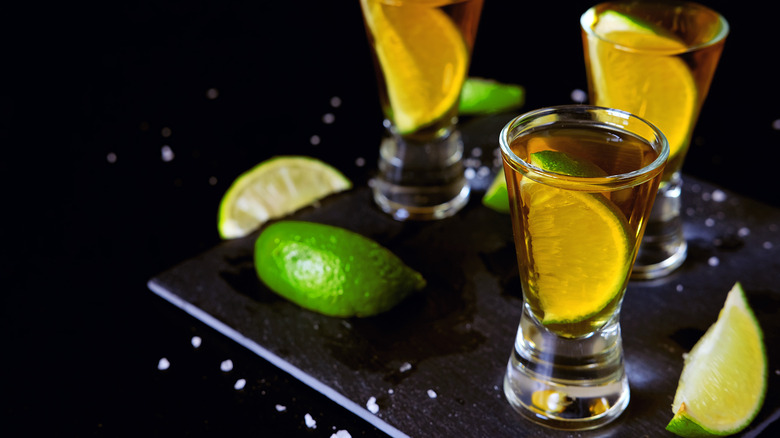When To Use Añejo Vs Reposado Tequila For The Best Cocktails
Tequila comes in several different styles, and when choosing the right one for sipping or mixing, they aren't one-size-fits-all. Blanco, reposado, and añejo are the most common varieties, and each one has distinctive flavors and characteristics. Blanco is usually clear and bottled immediately after distillation while reposado and añejo are golden in color and have been aged. Because the latter two spend time maturing in oak barrels, similar to whiskey, they are suitable for sipping on their own or being used in mixed drinks.
The smokiness of an añejo lends itself to bold cocktails, such as a south-of-the-border style Old Fashioned. A lighter reposado is ideal for lighter, citrusy drinks, like a Spicy Margarita or Paloma. Añejo is also great for mixing with liqueurs or vermouth, making it a highly versatile and adventurous spirit. While traditional pairings for a Blanco tequila, such as a lime wedge or sangrita (a traditional orange and tomato juice chaser), don't complement an añejo or reposado, other accouterments bring out their unique flavors exceptionally well. When enjoyed neat, añejos and Reposados alike pair well with dried fruits and sweets.
Añejo: Better with age
Añejo tequila is aged for one to three years and therefore develops the desirable qualities that come from spending time in a barrel. Like a dark rum or a nice scotch, the golden color develops over time and is accompanied by distinctive flavors and notable smoothness. Depending on what type of oak the tequila is aged in, European or American, it will take on slightly different tasting notes. American oak is associated with flavors like maple, caramel, and vanilla while European oak barrels tend to lend more spice and fruitiness to the palate. Because barrels are toasted or charred before being used for aging, there are also noticeable smoke flavors in many añejos and extra añejos (tequilas barrel-aged more than three years).
Because of this complexity and the superior smoothness of añejos, they are best served in drinks where they can be the star of the show. They truly shine in traditionally whiskey-based cocktails, such as a Manhattan or an añejo Sour. The layered flavors and sweetness make them ideal for sipping over ice or neat and un-chilled. Butter toffee and cut stone fruit are wonderful food accompaniments that complement añejo characteristics well.
Reposado: Bright and balanced
The middle child of tequila, right in between Blanco and añejo, is reposado. Aged anywhere from two to 11 months, reposado tequila is lighter in flavor and not quite as smooth as an añejo. It is still enjoyable when served neat, but it does not have the same level of spice and warmth that an añejo enjoys from its long rest in the barrel. It does, however, hold onto some of the more savory flavors present in tequilas that can age out of añejos and are overpowered by the heat of a Blanco. Because reposados still have some bite but a more developed complexity, they are well-suited to bright, fruit-forward summer drinks.
While Blanco is a favorite for classic margaritas, reaching for a reposado instead will elevate the flavors without overwhelming the other cocktail components. Because tequilas can be described as having earthy, vegetal notes on the palate, reposado lends itself to drinks with herbal influences. Think rosemary paloma or tequila basil lemonade. Many tropical cocktails can benefit from the added dimensions of flavor that come from a good reposado, so don't be afraid to experiment and hone your tequila-tasting skills.



